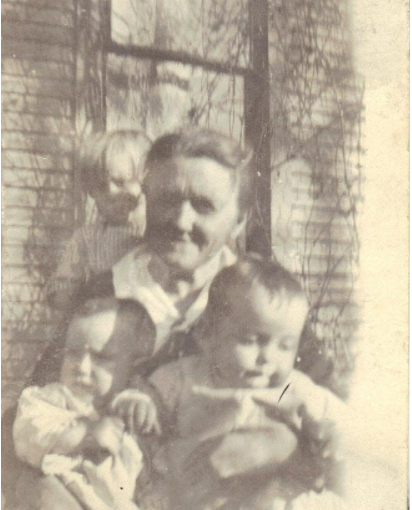My paternal great-grandmother Martha Ellen Kelley was born in Henry County, Iowa, near Mt. Pleasant. She was the seventh of nine children to John W Kelley and Eliza Hurd.
John and Eliza moved from Champaign County, Ohio, to this area in 1856. John’s mother, Mary Hibbard Kelley Stewart, and Eliza’s father, William Hurd, and their families accompanied them. They can be found living near one another in the 1860 census. I visited the site of the Kelley farm in 2019.
These are the fields that the Kelleys, Stewarts, and Hurds worked. The houses on this street were built up against the hill. It was really peaceful there.
Sometime before 1880, her family moved across the state to Council Bluffs. Mattie married Noah James in Omaha, Nebraska on June 10, 1888.
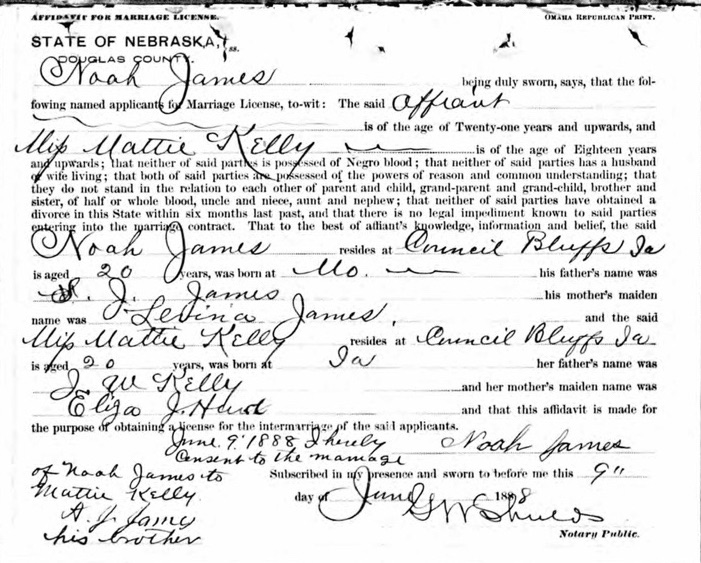
She and Noah had eight children from 1889 to 1908, including my grandfather. The Jameses lived in the same house at 2700 Second Avenue for at least 30 years. Martha is posed next to the porch of the house in almost every photo I have of her.
Unfortunately, there isn’t a lot of paperwork documenting her life other than censuses, so I hope we can get a sense of her personality through her photos.
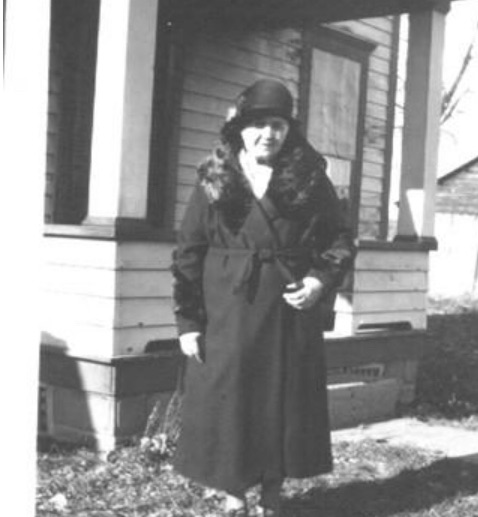
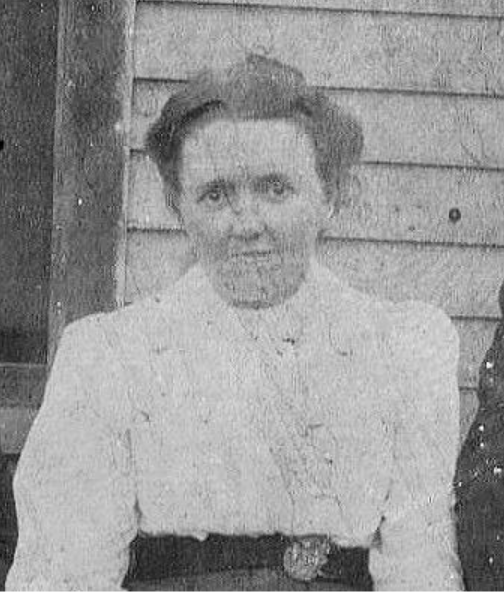

Martha was a Methodist. There is a family story that she was estranged from her mother at the time of her mother’s death in 1906 because she was raised Irish Catholic. I haven’t been able to corroborate this. The couple lost their eldest daughter Frances in 1913, the year Frances turned 20 years old.
This last photo and the mention of her many grandchildren and great-grandchildren in her obituary seem to point to a nurturing spirit.

She died on April 19, 1937 at the age of 68 from heart disease.
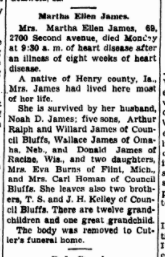
*The bolded names in this article indicate my direct ancestors.
- US Federal Censuses, 1860-1880, Henry County, Iowa; 1900-1930, Pottawattamie County, Iowa. Accessed on Familysearch.org and Ancestry.com
- Nebraska Marriage Records, 1855-1908, Douglas County 1887-1888, Noah James and Mattie Kelly. p 855/1000 in record. Accessed on Ancestry.com
- Iowa Certificate of Vital Record, County of Pottawattamie, File 378-216. Personal records. Received from Iowa State Dept of Public Health, 11 Aug 2016.
- US City Directories, Council Bluffs City Directory, 1918-1936
- Photos sourced from family members. Video from my own files.
